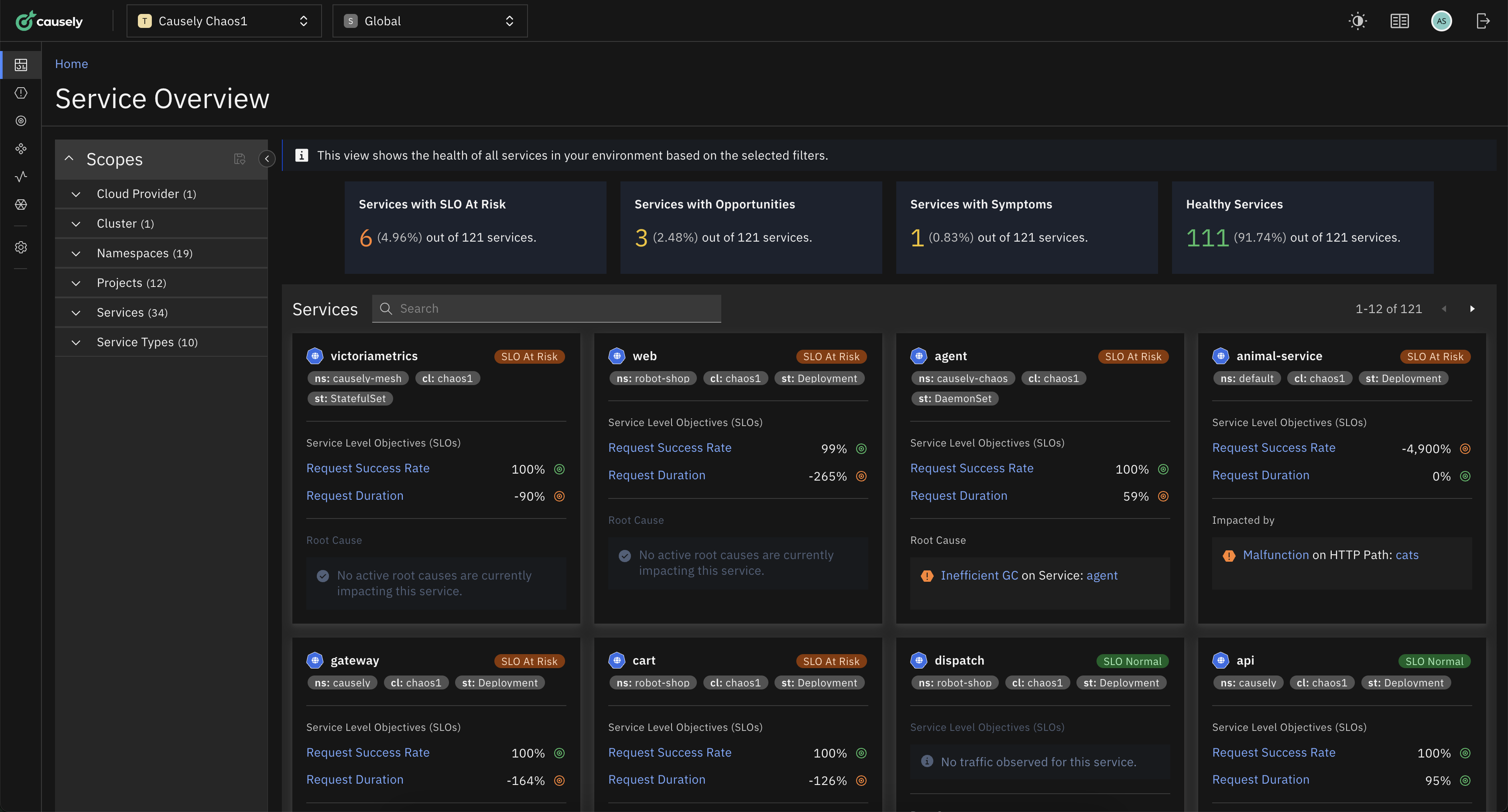Find which service broke things, and why, in seconds.
When you don't know what's degrading performance, Causely automatically pinpoints what broke, where it started, and what to do next, no config, no queries, no toil.
From telemetry to action
You're staring at 247 alerts, Causely sends you just one clear root cause.
Causely slips in between your telemetry data streams and the tools you live in every day, running real‑time causal inference so you see the actual failures.

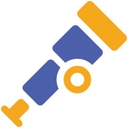



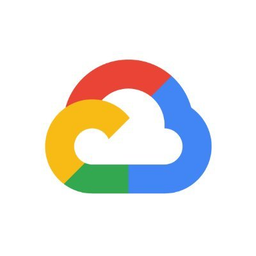
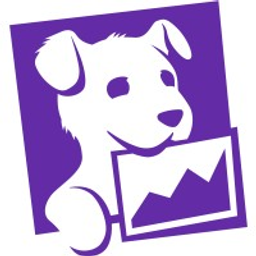

Use what you have.
See what you couldn't.
- Auto-instruments traces, no manual tagging or config
- Ingest what you already collect: Datadog, Prometheus, and more
- Zero code changes or sidecars required, works out of the box
- Auto-discovers services, APIs, queues, databases, and infra topology
- Processes telemetry at the edge, minimizing data movement and cost
Cut through the noise.
Get to the cause.
- Maps symptoms to growing library of cloud native failure patterns
- Explains the why behind failures, not just what broke
- Detects cascades, bottlenecks, and code regressions automatically
- Traces shifting service dependencies to pinpoint the true root cause
Root cause, impact, fix,
all on one card.
See everything you need to understand and resolve issues fast.
- Symptom timeline with metrics and service impact
- Error logs and key events, filtered to what matters
- Clear remediation steps tailored to the specific root cause
- Causality graph tracing how each symptom leads to the issue
Push answers into your workflow
- Slack: Real-time root cause + blast radius in your incident channel
- IDE (via MCP): One-click, explainable self-healing and code-level fixes
- Grafana: Root causes and service health right beside your metrics
- PagerDuty/Opsgenie: Alerts that tell “why” and the next steps
- Jira: Ticket auto-filled with impact, owner, and fix




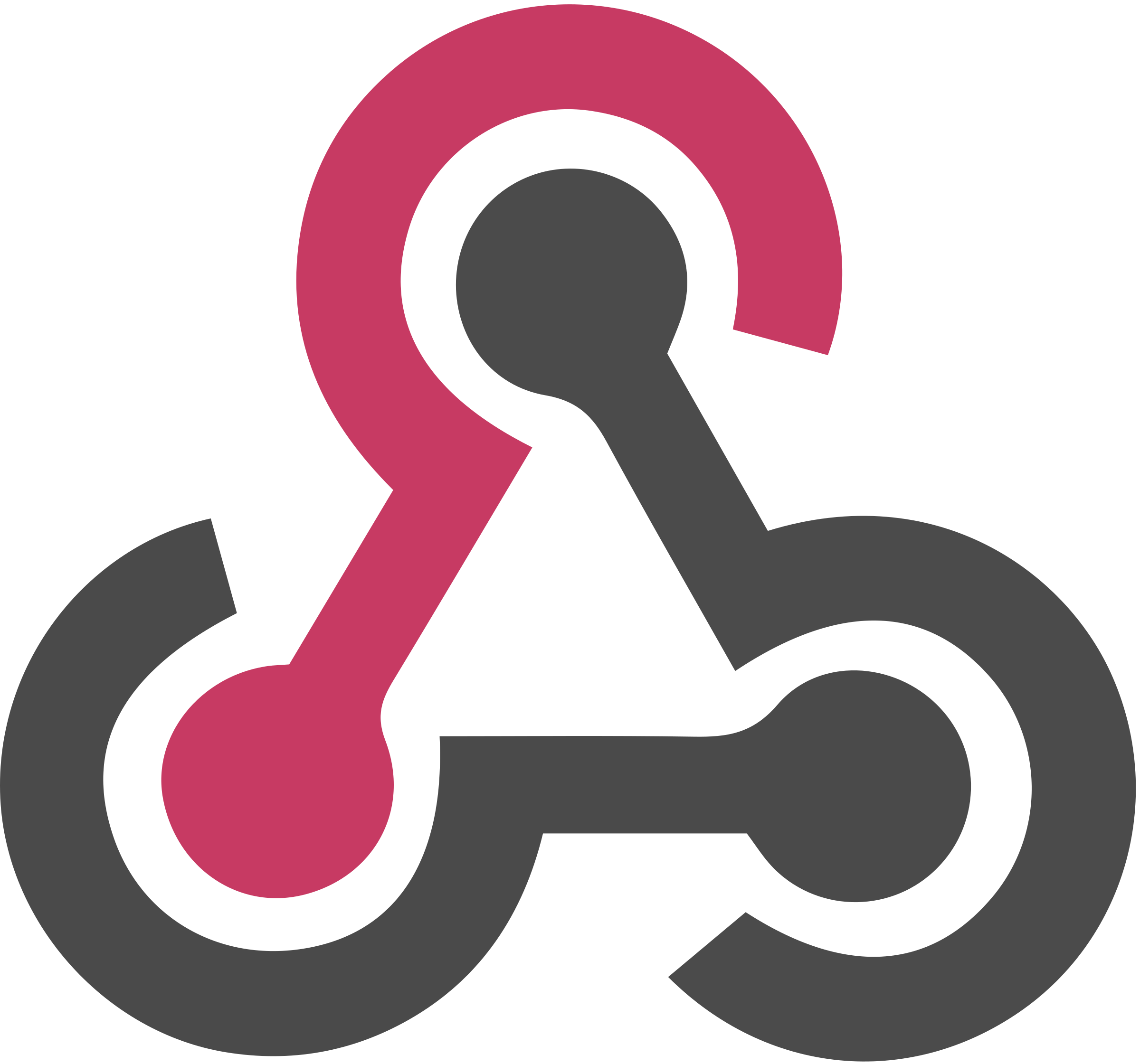





Fast answers you can trust,
when every second counts
- Use natural language to ask operational questions in real time
- Get clear explanations of what’s going wrong and how to fix it
- Built for high-pressure incidents in Slack and Causely UI
Your environment. Your control.
Zero config required.
- Installs in minutes via Helm or Terraform, no manual tuning
- Runs locally, processes telemetry on your infrastructure
- Minimizes data transfer by sending only symptom state
- Works seamlessly across AWS, GCP, Azure, and on-prem
- No vendor lock-in, no performance overhead
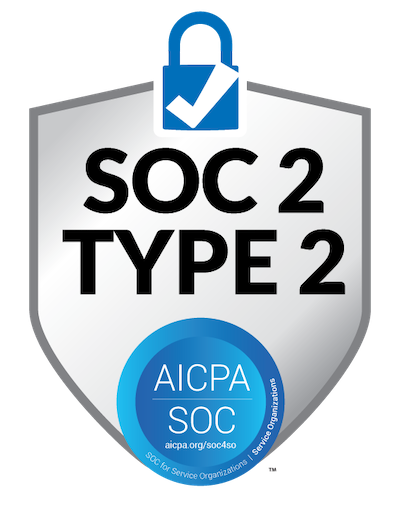
Ready to kill the 2 a.m. war-room?
